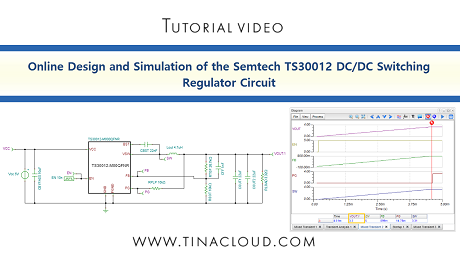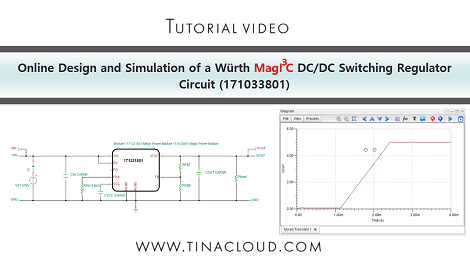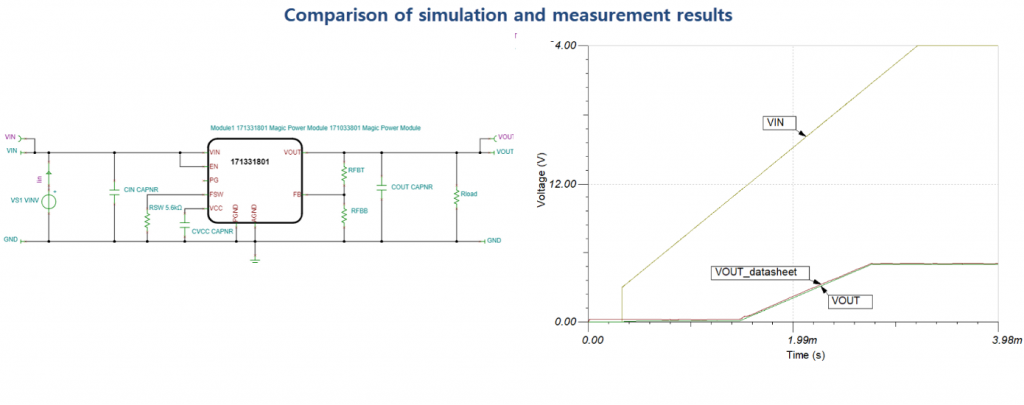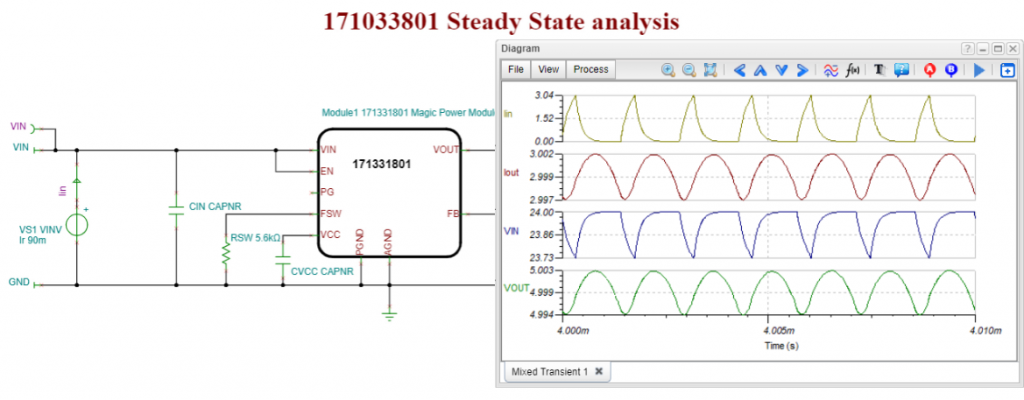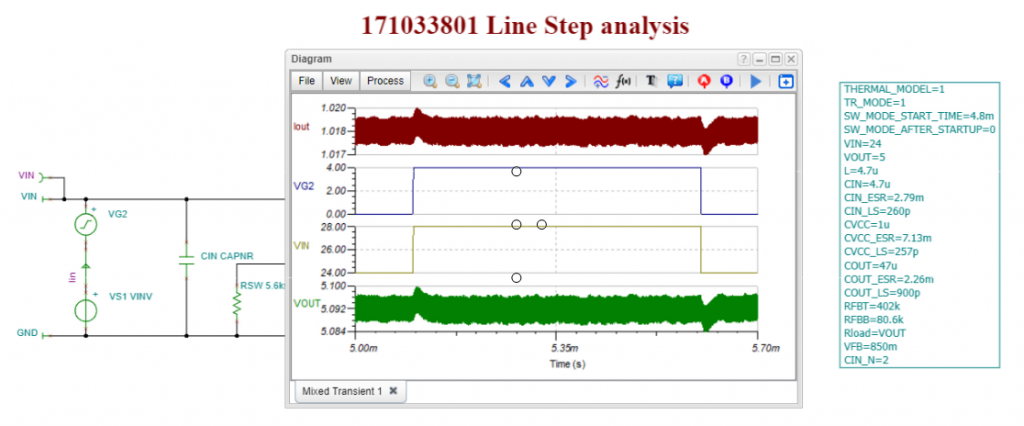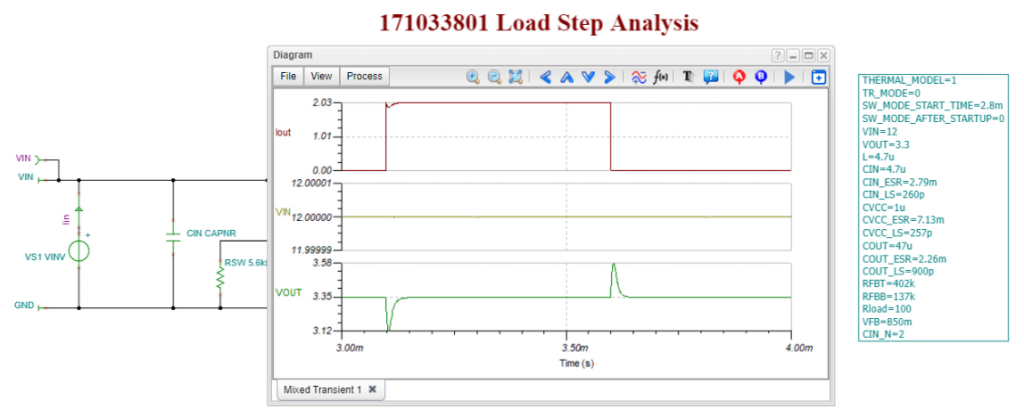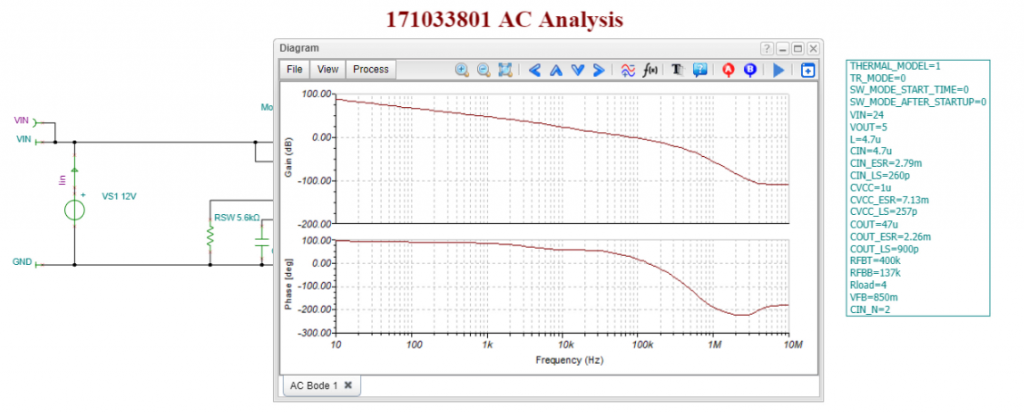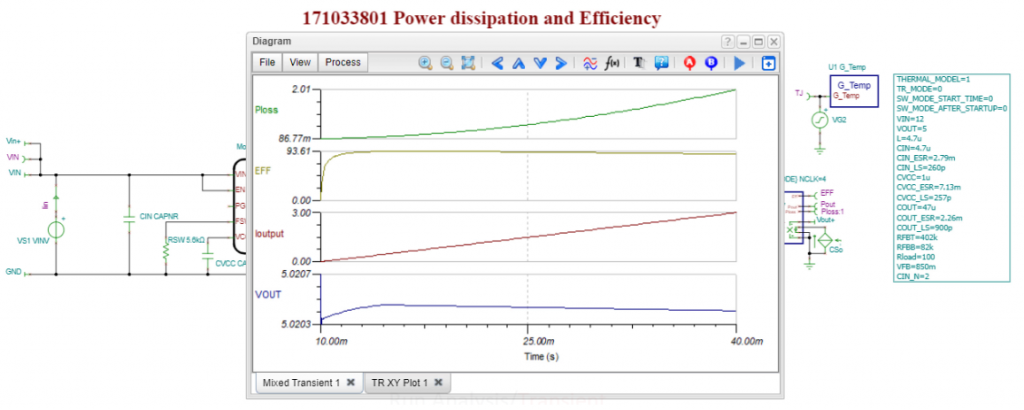In this video we demonstrate the online design and simulation of the Semtech TS30012 DC/DC synchronous switching regulator evaluation circuit using TINACloud.
Startup Transient Simulation
The startup transient of a DC-DC converter is the period of time during which the converter is transitioning from its off state to its steady-state operating condition.

Startup Transient Simulation circuit and diagram
Redesigning the circuit
Let’s redesign the circuit to generate a 3.3 V output voltage.
The Design Tool changed the RTOP resistance to 26.7k and displayed a quick diagram of all the relevant analysis results, based on analytic calculations.
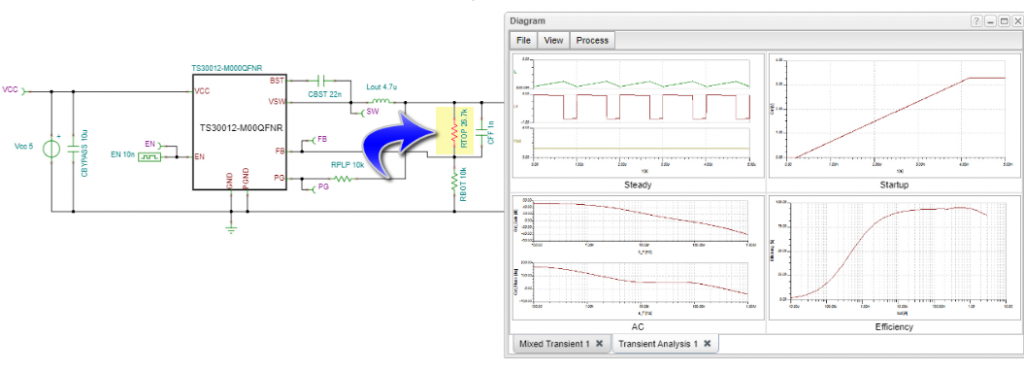
Steady State Analysis
Steady state analysis of a DC-DC power supply is the analysis of the circuit’s behavior when it has reached a steady state. This means that the output voltage is constant, except for the ripple voltage, and all the components in the circuit are operating in their steady state conditions.
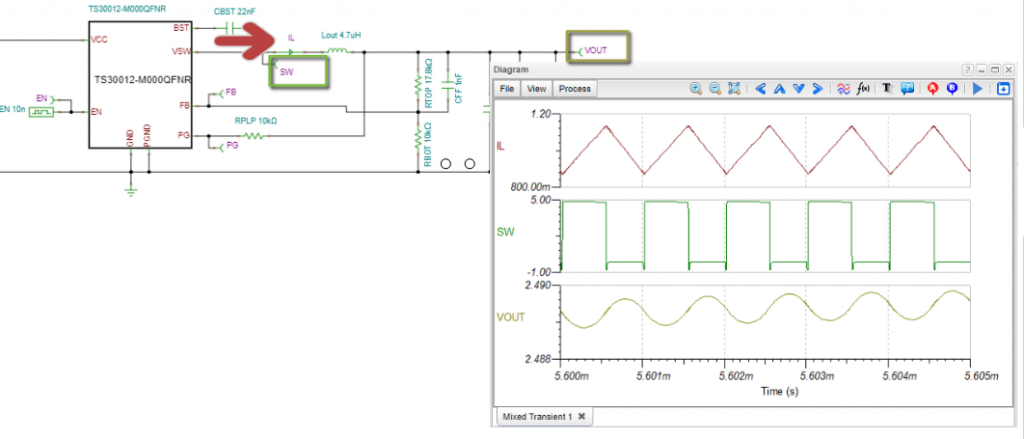
Line Step Analysis
Line stepping analysis of DC-DC converters is used to determine how a DC-DC converter responds to changes in the input voltage.

Line Step Analysis
Load Step Analysis
Load step analysis of DC-DC converters is a type of circuit simulation that is used to determine how a DC-DC converter responds to changes in the load current.

Load Step Analysis
Comparison of simulation and measurement results
The simulation results show good agreement with the voltage measurements in the TS300012 datasheet.
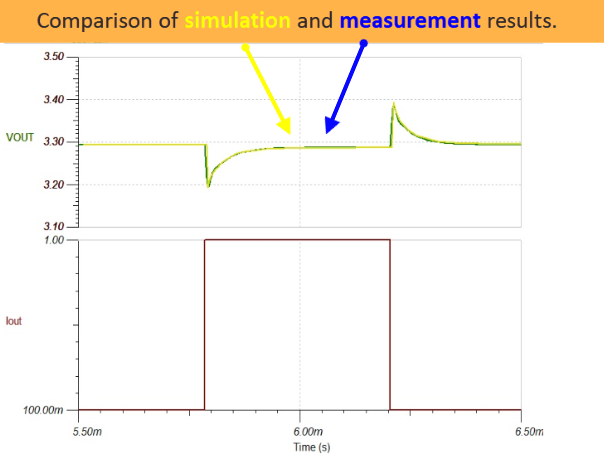
AC Analysis
AC analysis is a powerful tool for designing and optimizing DC-DC converters. It provides the frequency response of the converter, which can be used to analyze its stability and performance under different conditions.

The AC Bode diagram of the Loop Gain
Efficiency Analysis
TINA and TINACloud also allow fast and accurate calculation of efficiency as a function of load current.
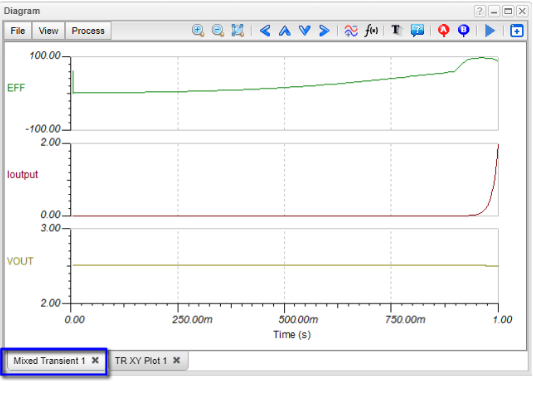
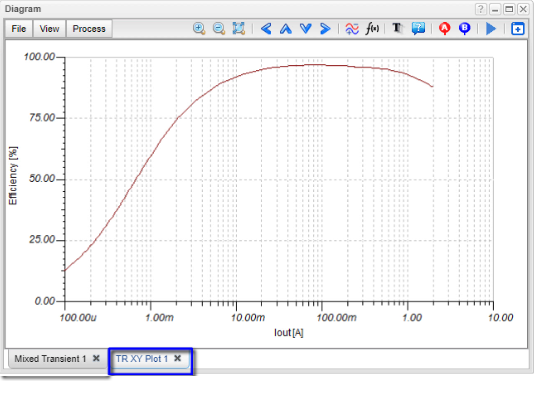
Content of the video:
- 00:00 Introduction
- 00:31 Startup Transient Simulation
- 02:02 Redesigning the circuit
- 04:11 Steady State Analysis
- 05:45 Line Step Analysis
- 06:18 Load Step Analysis
- 07:03 AC Analysis
- 07:41 Efficiency Analysis
- 08:14 Conclusion
Click here to watch our video.
You can learn more about TINACloud here: www.tinacloud.com
You can learn more about TINA here: www.tina.com

